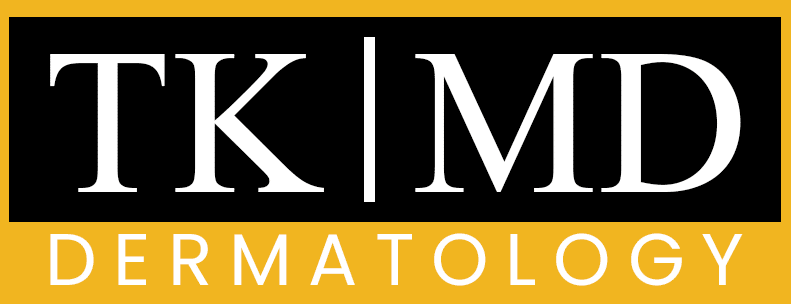When we think about body modifications, piercings often come to mind. However, dermal piercings present a unique twist on the traditional piercing concept. Unlike standard piercings that pass through the skin and exit on the other side, dermal piercings consist of a single anchor that is inserted beneath the skin, with only the decorative top visible.
This innovative approach allows for a more versatile placement on various body parts, including the face, neck, and chest, providing an opportunity for creative expression that goes beyond conventional jewelry. The distinction between dermal piercings and traditional piercings lies not only in their structure but also in their healing process and maintenance. Traditional piercings typically involve a hole that can accommodate various types of jewelry, while dermal piercings require careful consideration of the anchor’s placement and the surrounding tissue.
This difference means that we must approach dermal piercings with a deeper understanding of our body’s anatomy and how it interacts with foreign objects. As we explore this fascinating form of body art, we can appreciate the artistry involved in both the placement and the design of dermal piercings.
Key Takeaways
- Dermal piercings are different from traditional piercings as they involve a single point of entry with the jewelry sitting flush against the skin.
- When getting a dermal piercing, expect a small incision to be made in the skin, followed by the insertion of the jewelry anchor.
- Factors to consider when choosing the right location for your dermal piercing include skin thickness, movement, and visibility.
- Proper aftercare for dermal piercings involves cleaning with saline solution, avoiding trauma to the area, and not changing the jewelry too soon.
- Potential risks and complications associated with dermal piercings include infection, rejection, and scarring.
The Process of Getting a Dermal Piercing: What to Expect
Initial Consultation
The first step typically involves a consultation with a professional piercer who will assess our desired location and discuss any concerns we may have. During this consultation, we can expect to learn about the procedure, aftercare, and potential risks involved.
The Piercing Process
Once we decide to move forward, the actual process of getting a dermal piercing begins. The piercer will clean the area thoroughly to minimize the risk of infection and mark the spot where the anchor will be placed. Using a specialized tool, they will create a small incision in the skin to insert the anchor securely beneath the surface. Afterward, they will attach the decorative top, which is what will be visible above the skin.
What to Expect
While some may experience discomfort during this process, many find it to be relatively quick and manageable.
Understanding what to expect can help alleviate any anxiety we might feel about this unique form of body modification.
Choosing the Right Location for Your Dermal Piercing: Factors to Consider

Selecting the perfect location for our dermal piercing is an essential part of the process that requires careful thought. One of the primary factors to consider is visibility; we may want our piercing to be prominently displayed or perhaps prefer a more discreet placement. Areas such as the collarbone or cheekbones can create stunning visual effects, while locations like the lower back or thighs offer more privacy.
Our personal style and how we wish to express ourselves through body art will heavily influence this decision. Another important consideration is the anatomy of our body. Certain areas may be more prone to movement or friction, which can affect healing and longevity.
For instance, dermal piercings on areas that experience frequent contact with clothing or accessories may face higher risks of irritation or rejection. Additionally, we should think about our lifestyle; if we lead an active life or engage in sports, some locations may be more suitable than others. By weighing these factors carefully, we can choose a location that not only looks great but also aligns with our daily activities and personal comfort.
Aftercare for Dermal Piercings: Tips for Proper Healing and Maintenance
Once we have our dermal piercing, proper aftercare becomes paramount to ensure a smooth healing process. The first step is to keep the area clean; we should gently wash it with saline solution or a mild antibacterial soap twice a day. Avoiding harsh chemicals or alcohol-based products is crucial, as these can irritate the skin and hinder healing.
Additionally, we should refrain from touching or playing with the piercing unnecessarily, as this can introduce bacteria and lead to infections. Monitoring our piercing for any signs of complications is also essential during the healing phase. We should be vigilant for symptoms such as excessive redness, swelling, or discharge, which could indicate an infection or rejection.
If we notice any concerning changes, consulting with our piercer or a healthcare professional promptly is advisable. By adhering to these aftercare guidelines and being attentive to our body’s signals, we can promote optimal healing and enjoy our new body art for years to come.
Potential Risks and Complications Associated with Dermal Piercings
While dermal piercings can be a beautiful form of self-expression, they are not without risks. One of the most common complications is infection, which can occur if bacteria enter through the incision site. Symptoms may include increased redness, swelling, pain, or discharge from the piercing.
To mitigate this risk, maintaining proper hygiene during both the healing process and afterward is crucial. Another potential issue is rejection, where the body gradually pushes out the anchor over time. This can happen for various reasons, including improper placement or movement in high-friction areas.
If we notice that our piercing appears to be migrating or becoming more visible beneath the skin’s surface, it’s essential to consult with our piercer immediately. Understanding these risks allows us to make informed decisions about our body art and take proactive steps to minimize complications.
Dermal Piercing Jewelry Options: Types and Materials

When it comes to choosing jewelry for our dermal piercings, we are presented with a plethora of options that cater to various styles and preferences. The most common types of jewelry include flat-back studs, which feature a flat base that sits against the skin for comfort and stability. Other options include decorative tops that come in various shapes and sizes, allowing us to express our individuality through unique designs.
Material choice is equally important in ensuring both comfort and safety. Surgical stainless steel is a popular option due to its durability and resistance to corrosion; however, titanium is often recommended for those with sensitive skin as it is hypoallergenic. Additionally, some may opt for biocompatible materials like glass or acrylic for decorative tops.
By carefully selecting both the type and material of our jewelry, we can enhance not only the aesthetic appeal but also the overall health of our dermal piercings.
How to Change Dermal Piercing Jewelry Safely and Properly
Changing our dermal piercing jewelry can be an exciting way to refresh our look; however, it’s essential to approach this process with care to avoid complications. Before attempting to change our jewelry, we should ensure that our piercing has fully healed—typically taking several months—by consulting with our piercer if unsure. Once we confirm that it’s safe to proceed, we should gather all necessary tools, including clean gloves, antiseptic solution, and new jewelry.
To begin changing our jewelry, we should first clean our hands thoroughly and put on gloves to maintain hygiene. Next, using a pair of sterile pliers or tools designed for this purpose, we can gently unscrew or remove the decorative top from the anchor while being cautious not to disturb the base beneath the skin. Afterward, we can carefully insert the new jewelry before securing it in place.
Following this process ensures that we minimize any risk of irritation or infection while enjoying a fresh new look.
Dermal Piercing Removal: What to Expect and Aftercare
At some point, we may decide that it’s time to remove our dermal piercing—whether due to personal preference or complications. The removal process typically involves visiting a professional piercer who will use sterile tools to carefully extract the anchor from beneath the skin. This procedure is usually quick and straightforward; however, some discomfort may be experienced during removal.
After removal, proper aftercare remains essential for ensuring that the area heals well. We should keep the site clean by washing it gently with saline solution or mild soap while avoiding any harsh chemicals that could irritate the skin. Monitoring for signs of infection during this period is crucial; if any concerning symptoms arise, seeking medical advice promptly is advisable.
By following these aftercare guidelines post-removal, we can support healthy healing and transition smoothly away from our dermal piercing.
Dermal Piercing FAQs: Common Questions and Answers
As we delve into the world of dermal piercings, it’s natural to have questions about this unique form of body art. One common inquiry revolves around how long dermal piercings take to heal; typically, they require several months for complete healing due to their unique structure and placement beneath the skin. Another frequent question pertains to pain levels during both the piercing process and afterward; while some discomfort may occur initially, many find it manageable compared to other forms of body modification.
Additionally, individuals often wonder about how long they can keep their dermal piercings before needing to change jewelry or remove them altogether. With proper care and attention, dermal piercings can last for years; however, regular maintenance and monitoring are key factors in ensuring their longevity. By addressing these common questions and concerns, we can empower ourselves with knowledge as we navigate our journey into dermal piercings.
The Importance of Choosing a Professional and Experienced Piercer for Dermal Piercings
Selecting a professional and experienced piercer is one of the most critical steps in ensuring a successful dermal piercing experience. A skilled piercer will not only possess technical expertise but also an understanding of anatomy that allows them to place anchors safely and effectively. This knowledge significantly reduces risks associated with complications such as infection or rejection.
Moreover, an experienced piercer will prioritize hygiene practices throughout the process—using sterile tools and maintaining a clean environment—to safeguard our health during this procedure. By investing time in researching reputable piercers in our area and reading reviews from previous clients, we can make informed choices that enhance our overall experience with dermal piercings.
Dermal Piercing Trends and Styles: Inspiration for Your Next Piercing
As trends in body art continue to evolve, dermal piercings have gained popularity for their versatility and aesthetic appeal. From minimalist designs featuring simple studs to elaborate arrangements incorporating multiple piercings in one area, there are endless possibilities for personalization. We might find inspiration in social media platforms where artists showcase their work or explore fashion magazines highlighting innovative styles.
Additionally, combining dermal piercings with other forms of body art—such as tattoos—can create stunning visual effects that reflect our unique personalities. Whether opting for bold statement pieces or delicate accents that complement existing tattoos, exploring current trends allows us to express ourselves creatively through body modifications while staying true to our individual style preferences. In conclusion, understanding dermal piercings involves delving into their unique characteristics compared to traditional piercings while considering factors such as location selection, aftercare practices, potential risks involved, jewelry options available, removal processes when necessary—and ultimately choosing skilled professionals who prioritize safety throughout every step of this exciting journey into body art!
If you are considering getting a dermal piercing, it is important to also be aware of how to properly care for your skin afterwards. One helpful resource to consult is this article on the best treatments for hyperpigmentation recommended by a top dermatologist. Understanding how to maintain healthy skin is crucial, especially when undergoing procedures like dermal piercings. For more expert advice on skincare, you can also find a local dermatologist near you or explore options for skin rejuvenation treatments. Click here to learn more.
FAQs
What is a dermal piercing?
A dermal piercing, also known as a microdermal piercing or single-point piercing, is a type of body piercing that involves inserting a small piece of jewelry into the dermal layer of the skin.
How is a dermal piercing different from a traditional piercing?
Unlike traditional piercings that go through a specific entry and exit point, dermal piercings involve anchoring the jewelry in the dermal layer of the skin with a small base, allowing for more flexibility in placement and design.
What are the potential risks and complications of dermal piercings?
Potential risks and complications of dermal piercings include infection, rejection of the jewelry by the body, scarring, and migration of the piercing.
How long does it take for a dermal piercing to heal?
Healing time for dermal piercings can vary, but typically takes anywhere from 6 to 12 weeks. It is important to follow proper aftercare instructions to promote healing and reduce the risk of complications.
Can dermal piercings be removed easily?
Dermal piercings should only be removed by a professional piercer to minimize the risk of injury or scarring. Attempting to remove the jewelry at home can lead to complications.


